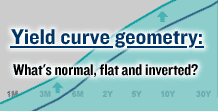Recession clouds darken 2007 outlookMost economists expect slower growth and no downturn, but some recent signals are flashing red.NEW YORK (CNNMoney.com) -- The economy is stumbling at the end of 2006, setting off alarm bells that growth might not just slow next year but that the nation could tumble into a recession. The recent trend of slower growth is not expected to be reversed any time soon. Home building and the broader real estate market are both already in a recession by most accounts and are expected to stay there well into next year. Manufacturing could soon follow, according to some recent readings. While most economists are still expecting the economy to avoid a full-blown downturn next year, several say the odds of a recession have risen. Even the more optimistic analysts are looking for a slowdown in growth in gross domestic product (GDP), the broadest measure of the economy, to between 2 and 3 percent next year, from 3 percent or better this year. "We don't think there'll be a recession, but the risks have risen," said David Berson, chief economist of mortgage financing firm Fannie Mae. He now estimates the chance of recession at 35 percent for 2007, up from a 25 to 30 percent chance a few months ago. "Some of the Christmas spending wasn't as strong as we'd hope," said Berson, referring to estimates that holiday sales posted the smallest gain in four years this year. "And I think we have not reached the bottom in housing yet." He also points to a survey of manufacturing executives that fell into negative territory last month after 41 straight months of growth. In addition, a key measure of demand for big ticket items by businesses fell in the last two government reports on durable goods orders - a sign that manufacturing weakness extends beyond the Big Three automakers and their suppliers. Finally, Berson pointed to the so-called inverted yield curve, in which longer-term rates such as the 10-year Treasury note have been much lower than short-term rates, such as the Fed funds rate, the short-term rate set by the Federal Reserve. Berson said that in and of itself isn't enough to cause a recession, but it should be read as a warning sign. "With the yield curve in the shape it is now, the economy is more susceptible to shocks," he said. "If oil went to $80 a barrel, or there was a sharp drop in the dollar, we could be in recession." Berson is not alone in his worries. A survey of 279 corporate chief financial officers in early December found 30 percent were "quite" to "very" concerned about recession next year, almost twice as many as were worried about inflation. And 59 percent of those surveyed described themselves as at least moderately concerned about a recession. Those levels of concern were a bit below three months earlier, though. Paul Kasriel, chief economist with the Northern Trust in Chicago, puts the chance of a recession as high as 45 percent next year, and he thinks that only a series of interest rate cuts by the Fed starting in the spring will help prevent a downturn. A recession would be the first since 2001. "The goods producing sectors - manufacturing, construction - still represent 45 percent of GDP," he said. "These are the part of the economy that move before the economy as a whole goes into recession and right now they're moving south." Bob Brusca of FAO Economics said he worries about surveys of manufacturing activity from different Federal Reserve banks, such as those in Philadelphia and Dallas. "Not all declines in manufacturing lead to recession. But if the economy is going to go down, it's going to be led by manufacturing and construction," he said. "I'm not worried about a recession yet, but I'm not willing to dismiss it either." He puts the chance of a recession in 2007 at about 25 percent, up from a 10 percent chance a few months ago. But others look at continued strength in consumer spending, even at the end of a year that saw record energy prices, coupled with low unemployment and rising exports and they say the chance of a recession next year is pretty slim. Jeoff Hall, the chief U.S. economist for Thomson Financial, said he sees less than a 20 percent chance of a recession, noting he's less concerned than he was a few months ago since he's less worried that the Fed will hike interest rates further. He agrees with Brusca that the weakness in manufacturing is a cause for increased concern, though. "We thought it was just auto-related manufacturing, but a lot of regional Feds are showing pretty widespread decline in manufacturing," he said. Still, even with the increased worries about manufacturing, the National Association of Manufacturers is forecasting still solid 2.8 percent growth in the sector in the coming year, well below the 4 percent-plus growth the group's chief economist sees for 2006. "Firms have plenty of cash to spend and interest rates are still at historically low levels," said David Huether, chief economist for NAM. "I think we'll still have positive business investment going forward." |
|



